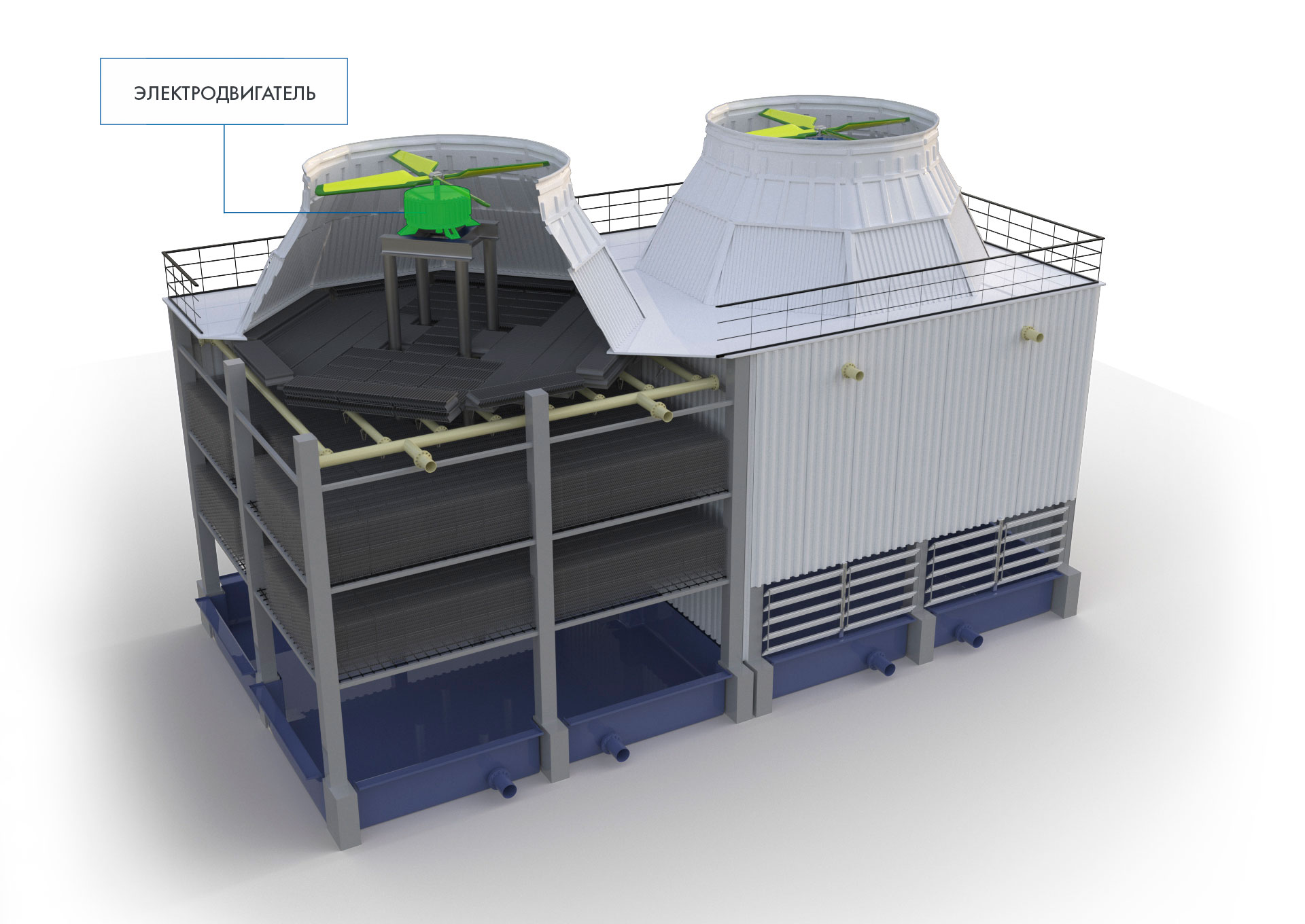Water as a refrigerant in energy and industrial facilities serves to remove the heat generated during production. The use of a classic once-through cooling system threatens water resources. In many countries, environmental water requirements prohibit the diversion of heated water. In order to further preserve natural sources of water, as well as following economic feasibility, RECYCLING COOLING SYSTEMS FOR TECHNOLOGICAL WATERS are used instead of classic continuous cooling systems.
We pay for the system for a period of 6 months to 2 years, depending on the cooling performance and the price level on the market. The main element of such systems is the cooling tower.
COOLING HOUSE — WORKING PRINCIPLE
The principle of operation of the cooling tower is quite simple. The cooling process in the cooling towers occurs due to the partial evaporation of water and heat exchange with air. The water in the cooling tower flows down the sprinkler and escapes with drops or a thin pellicle. At this time, air flows along the sprinkler. there is such a pattern: in cooling towers, when 1% of water is evaporated, the temperature of the remaining one decreases by 6 ° C. The loss of liquid is compensated by an external source. Moreover, fresh water, if necessary, is processed (filtered).

The most complex element of a tower cooling tower is an exhaust tower, the design of which is mainly determined by the material from which it is built.

Hot water enters the tower, where, depending on the type and design of the tower, it is cooled to the required temperature. Water cooling can be carried out:
— reverse air flow (fan cooling towers);
— due to the spraying of hot water with nozzles onto a special filler with a developed area over which water spreads with a thin pellicle and due to its slow flow, it is cooled (tower, atmospheric cooling towers);
— due to the spraying of water in special channels and the natural capture of atmospheric air
